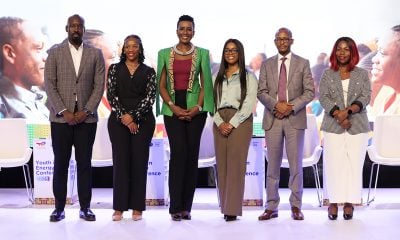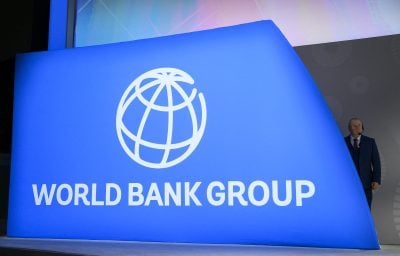Slowing down energy production will endanger Africa’s development, says Hussain Al Nowais.
We spoke to Hussain Al Nowais in London, where he is transiting following visits to Senegal and Togo. Al Nowais is the trusted, go-to person in the United Arab Emirates when it comes to African affairs. His family holding company, Al Nowais Investment controls many businesses such as the Rotana Group, one of the country’s leading hospitality groups, along with DANWAY, and AMEA Power.
With activities in both East and West Africa and more projects in the pipeline, Al Nowais explains how the African energy landscape compares with other markets, the key determinants behind AMEA Power’s
investments and why those calling for Africa to slow down energy production are endangering its development.
You’ve visited Senegal and Togo, and have a presence in other African markets. How do you determine the investments you’re going to make?
In assessing the African energy market we’ve identified countries where there is a huge shortage of energy, and therefore a need. They may have a shortage in terms of resources or in terms of their ability to fund [these projects], while some countries lack the regulatory framework for an independent power producer (IPP) or build-operate-transfer (BOT) kind of investment. We like to work with development finance institutions (DFIs), which are very good when it comes to governance, structuring projects and ensuring everything is done in the right way.
I believe in the potential of Africa. My government has been active in meeting many of the leaders on the continent and we have the allocated funds to support them and their various initiatives.
Is there a checklist that you take before entering a market?
First, we look at stability and security. We look at leadership. We look at the regulatory framework. We look at the resources available: mining, agriculture and the population. We look at a country’s history – does it respect its obligations? Has it been defaulting on its dues? We look at what experience a country has with BOTs and IPPs. All these kinds of things give us an indication. If we feel the potential is there but the risk is higher than the potential, which can happen in some cases, we try to insure that risk by going to the likes of the Multilateral Investment Guarantee Agency.
You said you have privileged access to capital. What do you mean by that?
I didn’t say privileged access. We have our own capital, but we have an excellent relationship with DFIs. The DFIs have the resources to fund energy projects. And if the developer is serious, credible and professional, then it ticks all the boxes for them.
Someone from GE who once operated in the Middle East told me that in Kuwait, Bahrain and Abu Dhabi, the time it took to get to
closure would be around eight to 12 months because everything was standardised. The regulatory environment was there, while in Africa it can take five, six or seven years.
He’s absolutely right and that is the biggest challenge we face today
because there is a real cost to time.
The longer you spend on developing a project, the more costs you incur on people, travel and advisors. The challenge we see today is that African governments are looking at lower tariffs, expecting the same rates as the Middle East and other countries.
My argument is that if you can deliver on the regulatory side and we can develop projects as fast as we do in the Middle East, then fine, you are entitled to that tariff. However, if it takes five to six years and the costs increase, you can’t expect that tariff.
Secondly, funding. We are present in the Middle East and in Africa. Let me use Jordan, where we have just closed a solar project, as an example.
It took two years and we were able to raise up to 80% [of the cost] through leverage [debt]. It’s a credible country with a proven track record of respecting its obligations, paying on time and moving fast.
By that same standard, in an African country it has taken six years to develop one project and we have spent huge amounts on development costs, and on legal, financial and technical advisors. You cannot expect the same tariffs when the costs and risks are greater. We need an internal rate of return to reflect this.
Where is the bottleneck? Is it on the regulatory side?
You might find a lack of experience in dealing with such business models and a reluctance to make decisions because of that lack of experience, in some cases the regulatory challenges.
Having said that, I am a strong believer in the potential of this continent. It’s a huge, growing market, and the key to its further growth is to develop the infrastructure and energy [markets] because without energy or infrastructure you cannot develop your economy. Africa has the fundamentals or potential in terms of population and resources, but without infrastructure and a regulatory framework, you cannot grow.
Is there a copy and paste
model you can apply to this particular sector?
I don’t believe in copy and paste models. Each country has its own characteristics. Having visited more than 25 African countries and spent time with many leaders, I feel excited that some of these countries have really got their act together.
Some of these leaders have a clear vision and are determined to make a change. Some have been able to bring in talented African expertise. Countries with this kind of leadership and talent will make an impact.
In terms of building and operating, is that more complicated than elsewhere, or more costly than elsewhere?
The skill sets available are moderate. It’s important to have these to encourage greater investment in building capacity. As much as we prefer to hire locals, some are not sufficiently committed or trained.
In one country I visited recently I was shocked to learn that unemployment ran at more than 35%.
I am a strong believer in human capital and building capacity.
I believe in training these individuals and creating jobs, but it’s equally important that they commit their time and willingness to learn, and that’s where we support them.
In terms of your business model you’re obviously looking for an offtaker, an offtaker that will be generally be in government…
The offtaker has to be a utility company that is a government company, because no one will invest in this sector if there is no credible offtaker. There are people developing another model where the offtaker is one large multinational or large company in the mining business, the cement business or the oil business. That could work if the offtaker has a credible
balance sheet.
Morocco has adopted a new law that allows a developer like us to
talk to a cement company or an investor in a holding company. The advantage of this model is that you can move faster.
The utilities have been criticised because their businesses are
unviable. What’s your view?
There are always challenges with them collecting their money to pay their obligations, and in many cases they subsidise the price of electricity.
The solution is to charge the right price to those who can find you a formula to support them through a mechanism that has been tried in other countries.
Then try to restructure the balance sheet of these utilities to be more efficient, to be more reliable so they become credible for investors.
How does a company like yours mitigate against foreign currency risk, which has been problematic over the past few years?
We always try to insist on payment in either US dollars or euros. In some West African countries they have the CFA, which is pegged to the euro. One way to mitigate the risk is that some countries pay you in local currency and the exchange rate is set to the date of the agreement.
If I don’t hedge myself against that risk I’ll go bust, and other companies have. Now, you could say out of the $1 tariff or $1 invoice I will pay 90% in dollars and 10% in local currency, but not more.
Are there enough bankable projects out there? People say there is plenty of capital, but a lack of bankable projects.
I cannot claim to be an expert on Africa, but in the past three or four years I’ve been spending time there the market is definitely there and there is a great need for power. Some DFIs say this continent is overpowered; I fundamentally disagree with that.
I was recently in Uganda and Kenya and they say Uganda is now maybe reaching its power capacity [threshold]. I asked what the total power capacity in Uganda was told it’s less than 1,000MW. For a population of more than 40m!
I come from a country of less than 10m and we have 70,000MW. South Africa has a population of 45m and it has more than 30,000MW.
So what are they talking about? If they are looking for the basics needed for a house, as in one bulb here and a mobile charger here, maybe. But if you have serious plans and you want to industrialise…
Who says that some countries have reached their threshold, or that they’re overpowered?
Some of the banks [DFIs]. I have heard them say: “This country, I believe, is saturated and I cannot give you loans for it.”
What are the grounds for saying it is saturated?
Is it due to the lack of distribution capacity?
That’s one big thing – they are unable to reach out to the countries because of the cost of distribution and transmission.
So that’s a big issue?
I think some of the focus when it comes to [overseas development assistance] should be [on distribution and transmission], yes. In some countries the Chinese are helping with the grid, improving and extending it.
Some countries are looking at mini-grids and some are looking at home solar systems, but home solar systems have a limited impact.
Mini-grids offer a solution but not enough, and therefore the solution is to invest and extend power and increase the coverage, so this is
definitely an area where the world has to help.
You see that as a concessional loan project as opposed to commercial projects?
For these grid connections, yes. The IPP of the generation can be
done commercially, which has been done, but the grid cannot be done commercially.
You invest in both conventional sources of energy and renewables. What’s your view on the optimal energy mix and the
future energy landscape?
We are focused on solar, wind and gas. I believe the gas solution, in view of the prices and availability, is a better solution. It provides cleaner and stable [sources of energy].
Solar is clean, wind is clean, but you need stability of the grid; you need 24-hour power.
Solar gives you five or six hours; wind gives you six or seven. That’s not enough. You need stability of the grid and that stability can come from fossil fuel for now.
HFO, coal or diesel is no longer acceptable, or bankable for that matter. The only solution is gas.
The continent is blessed with many sources of energy. It takes time
and determination to see these projects through, but they will happen.
Want to continue reading? Subscribe today.
You've read all your free articles for this month! Subscribe now to enjoy full access to our content.
Digital Monthly
£8.00 / month
Receive full unlimited access to our articles, opinions, podcasts and more.
Digital Yearly
£70.00 / year
Our best value offer - save £26 and gain access to all of our digital content for an entire year!
 Sign in with Google
Sign in with Google 


